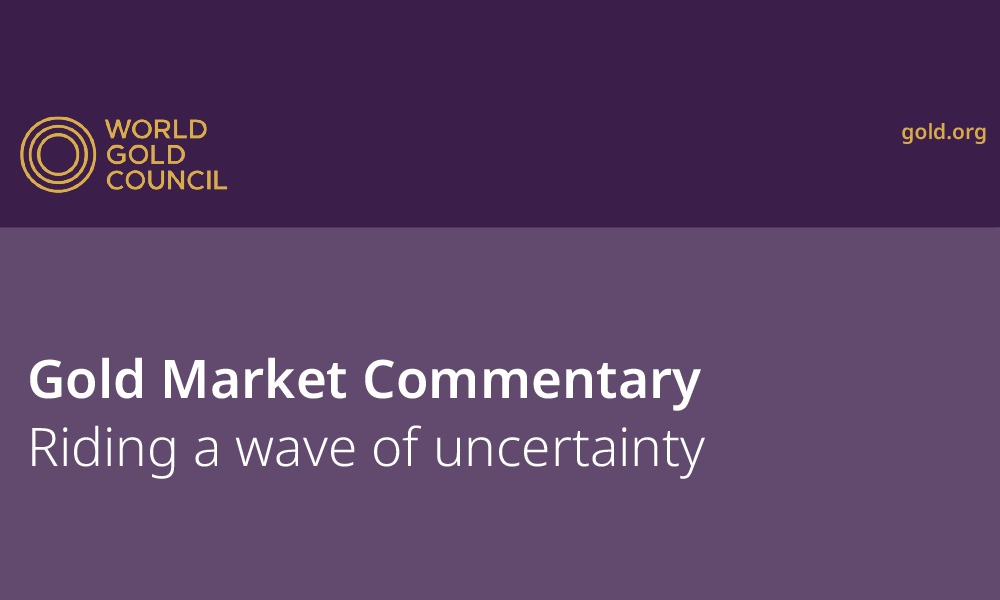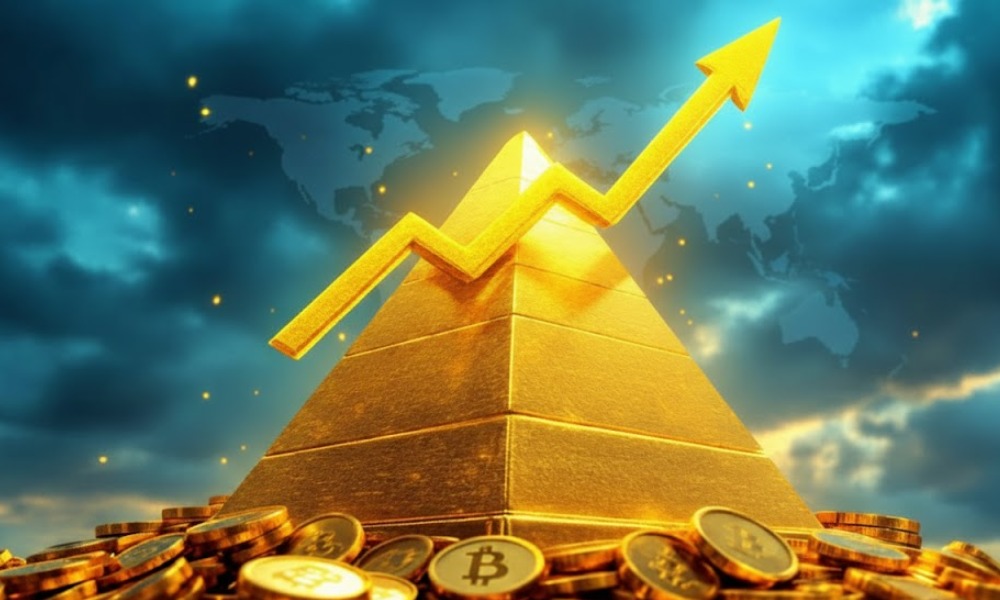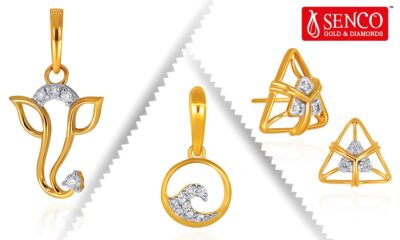International News
WGC Gold Market Commentary: Riding a wave of uncertainty

Dollar weakness and ETF flows fuel gold
Gold continued its uptrend in February, hitting multiple new highs before pulling back to end the month at US$2,835/oz – up 0.8% m/m.1 This performance was echoed across major currencies, all of which also registered new record highs (Table 1). General interest in gold was bolstered by continued flows of gold into COMEX inventories, driven by continued tariff uncertainty.
Gold hit new highs during the month, supported by a weaker US dollar, extending its y-t-d gains to 9percent According to our Gold Return Attribution Model (GRAM), US dollar weakness during the month was one of the primary drivers of gold’s performance, alongside an increase in geopolitical risk and a drop in interest rates (Chart 1). And while gold’s strong price appreciation in January created a small drag, it was counterbalanced by positive support from flight-to-quality flows. This was best illustrated by gold ETF activity, which saw massive net inflows of US$9.4bn (100t) – the strongest month since March 2022 – led by US- and Asian-listed funds.
Reassessing risk and reward
• The “Trump trade” – stronger dollar and US stocks – has taken a back seat amidst concerns about tariffs and hawkish foreign policies, conditions that will likely remain
• As governments look to increase military spending, budgets deficits are likely to increase and credit ratings to fall
• At the same time, despite inflationary pressures, markets expect a more dovish Fed, pricing in at least two full rate cuts by the end of the year
• These factors combined are creating a particularly supportive environment for gold.
Risk-off in, risk-on out
The “Trump trade” – which hinged on the pro-US growth agenda of the new administration and fuelled a dollar and stock rally post US election – appears to have faded.
While European stocks continue to do well, the major beneficiaries have been risk-off assets such as US Treasuries and gold (Chart 2).
Inflation is bubbling up
Trump‘s campaign agenda hinged on a few key items, including: tariffs, immigration and tax cuts2 – all of which have the potential to flare up inflation However, assessing the economic impact of tariffs is not straightforward: while they might be inflationary in a very strong economy, they could lower spending in a weaker one.3 And there are already signs that consumer sentiment in the US is beginning to falter: the University of Michigan consumer and expectation surveys are at their lowest level since 2023.4
Lower levels of immigration (and higher deportations) will likely lead to higher labour costs, although the strength of the labour market is key to determine its full effect. Nominal wages in the US are currently plateauing while potential large-scale Federal layoffs could increase labour supply. However, those workers are unlikely to fill the spaces left by immigration.
Tax cuts for businesses and the wealthy will boost growth and inflation. However, any anticipated boost from tax cuts has yet to materialise as they may take ‘months to negotiate’.5
Uncertainty, uncertainty, uncertainty
Investor nervousness has pushed bond prices higher and yields lower. Market participants now expect two full rate cuts by the end of the year…a far more dovish read from mid-January, pre-Trump inauguration. And the probability of a Fed hike appears to have peaked .
While January inflation data generally runs hot, policymakers at the Fed seem content with the progress that has been made so far. At the same time, elevated uncertainty was heavily cited in the last meeting minutes, whether through tariffs, immigration or domestic policy, such as potential large-scale Federal layoffs, a nod to the Fed’s dual mandate of price stability and full employment.
What’s more, US Treasury Secretary Bessent’s comments that they are focused on bringing down the 10-year yield has also served to ease conditions somewhat.
New world (dis)order?
Negotiations to end the Russia-Ukraine war have led to much handwringing and consternation, particularly across Europe during February. This has compounded already elevated geopolitical uncertainty as positive outcomes are by no means guaranteed and existing political alliances are being questioned.
Speculation that Europe will need to ramp up defence spending going forward – resulting in larger deficits – has already pushed up borrowing costs. Yield curves on European sovereign debt have become increasingly steep; short-term rates are falling while long-term rates remain high as expectations grow for an increased supply of long dated debt.
The UK has already committed to increase defence funding,8 and Germany’s future chancellor, Friedrich Merz, has begun discussions on the topic.9 For the latter, this could be further
complicated by the potential need to rely on the support of fringe parties after a somewhat mixed election outcome.10 The performance of the European defence sector, one of the best this year, is reflecting the likely continuation of this trend.
Should a resolution to the Russia-Ukraine war be found – and importantly, this will need to be one agreeable to all parties – this could dampen any geopolitical risk premium in gold. But it remains to be seen whether real progress can be made and, if so, what the implications will be. Until then, it is likely that gold will remain well supported.
Perfect conditions for gold?
Uncertainty appears to be the undertone across markets. Concerns over tariffs, and the wide-ranging impact they could have on global growth, continue to cast a cloud and question US exceptionalism. This has added to already rising geopolitical risk. Recent events have highlighted the need for greater military spending, which will likely result in even higher deficits.
There are several factors that could reinstate the thorny problem of higher inflation, especially at a time when deteriorating economic conditions may necessitate interest rates staying low. The US economy is likely in ‘stagflation’ and consumers appear to see it that way.
Historically, each of these drivers has individually been positive for gold. A move up in the GPR index of 100 points is typically linked to a 2.5% increase in the price of gold, all else equal. Similarly, a rise in 10-year break-even inflation expectations of 50bps is typically associated with an approx. 4% rise in gold prices. And a 50bps fall in 10-year Treasury rates over the long-run has been associated with a 2.5% rise in gold.
Although these drivers seldom occur simultaneously, their combined effect can create an environment in which gold can continue to perform positively.
It is worth noting, nonetheless, that a solid fundamental case for gold still must scale the hurdle of a temporary technical stretched price. A retracement may create short-term headwinds but could also provide a welcome respite for uninitiated investors, as well as for consumer gold demand . In all, we expect gold to remain in the limelight given the current market conditions.

International News
Gold continues upward march;Bank of America forecasts $5,000/oz for 2026

Gold prices in India saw a modest rise on Wednesday today Oct 15, mirroring an uptick in international markets as renewed US-China trade tensions and expectations of further US interest rate cuts bolstered demand for safe-haven assets.24k gold traded at Rs.1,28,360/10gm after gaining ₹10 in early trade, while silver prices increased by Rs.100 to Rs.1,89,100 per kilogram.
Gold prices surged to a record high of $4,179.48 per ounce on October 14, 2025. Investors flocked to safe-haven metals amid trade tensions and Fed rate-cut expectations. U.S. December gold futures jumped 57% year-to-date. Bank of America raised its 2026 gold forecast to $5,000 per ounce, warning of possible near-term corrections.
Gold prices soared to an unprecedented $4,179.48 per ounce on October 14, 2025, marking a historic milestone for the yellow metal. The rally comes as investors worldwide seek safety in hard assets amid a turbulent global economic backdrop marked by escalating trade tensions, slowing growth, and expectations of further interest rate cuts by the U.S. Federal Reserve.
The sharp surge in bullion prices has been driven by a combination of macroeconomic uncertainty and aggressive monetary easing. As inflation pressures remain sticky and central banks pivot toward dovish policies, gold has reasserted its role as a hedge against both currency debasement and market volatility.
In futures trading, U.S. December gold contracts have skyrocketed nearly 57% so far this year, underscoring the strength of investor demand across both institutional and retail segments. Analysts note that central bank buying—particularly from emerging markets—has added further momentum to the rally, with several countries diversifying reserves away from the U.S. dollar.
Reflecting this bullish sentiment, Bank of America has raised its 2026 gold price forecast to $5,000 per ounce, citing continued monetary easing, geopolitical instability, and robust central bank accumulation. However, the bank also cautioned that short-term corrections are likely, given the rapid pace of the recent run-up and potential bouts of profit-taking.
Overall, gold’s meteoric rise underscores a broader shift toward safe-haven assets, as investors navigate a world increasingly defined by economic fragmentation, shifting interest rate cycles, and persistent geopolitical risks.
-

 National News5 hours ago
National News5 hours agoSenco Gold & Diamonds launches affordable 9k gold jewellery starting under ₹7,000, a Game-changer amid fluctuating gold prices this Dhanteras
-

 BrandBuzz5 hours ago
BrandBuzz5 hours agoMavitrra Launches “The Amara Collection” – A Timeless Celebration of Bridal Grandeur and Festive Luxury
-

 Education6 hours ago
Education6 hours agoIndian jewellery trade and industry expectations & trends
-

 GlamBuzz10 hours ago
GlamBuzz10 hours agoDazzling Divas and Star Power: Inside Manish Malhotra’s Grand Diwali Celebration




